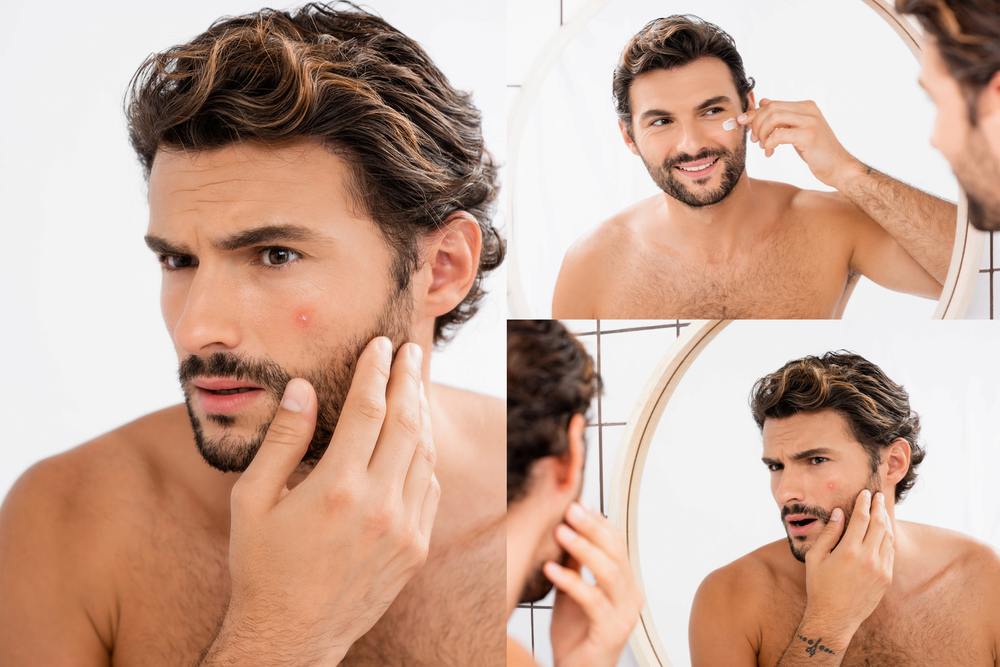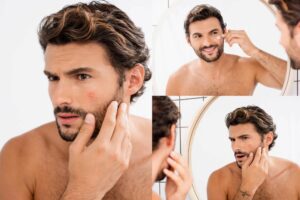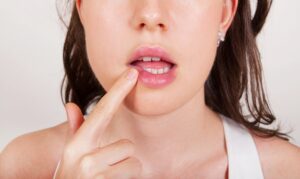- Australia Wide
- Phone Support 1300 003 310
- Email Support support@instantconsult.com.au
Understanding Acne

Acne is one of the most common skin conditions affecting people of all ages, but it’s especially prevalent during adolescence and early adulthood. It occurs when hair follicles become clogged with oil (sebum) and dead skin cells, leading to whiteheads, blackheads, pimples, or even deeper cystic lesions. While acne is not life-threatening, it can significantly impact self-esteem and quality of life if left untreated.
Types of Acne
Acne can appear in several different forms, each varying in severity, appearance, and underlying causes. Understanding the different types helps in choosing the most effective treatment.
Comedonal Acne
Comedonal acne is characterised by the presence of blackheads (open comedones) and whiteheads (closed comedones). It typically appears on the forehead, chin, and nose. This type of acne is generally non-inflammatory and results from clogged pores without significant redness or swelling.
Inflammatory Acne
Inflammatory acne occurs when comedones become red, swollen, and painful due to bacterial infection, primarily from Cutibacterium acnes. This type includes papules (small red bumps), pustules (pimples with pus), and nodules. It can cause more visible skin irritation and is often more persistent than comedonal acne.
Cystic Acne
Cystic acne is the most severe form, marked by deep, painful cysts and nodules that can cause permanent scarring. It develops when pores become clogged deep within the skin and become infected. Cystic acne often requires medical intervention due to its intensity and risk of long-term skin damage.
Causes of Acne
There is no single cause of acne; rather, it results from a combination of internal and external factors that vary between individuals.
Hormonal Factors
Hormones, particularly androgens, play a significant role in stimulating oil production in the skin. Fluctuations during puberty, menstruation, pregnancy, or conditions such as polycystic ovary syndrome (PCOS) can trigger or worsen acne.
Dietary Influences
Some research suggests that high-glycaemic diets and dairy products may contribute to acne in certain individuals. Foods that spike insulin levels—such as sugary snacks, white bread, and soft drinks—may exacerbate oil production and inflammation in the skin.
Environmental Factors
Pollution, humidity, and exposure to greasy or oily substances can worsen acne. Skincare products that clog pores (comedogenic) and friction from helmets, backpacks, or tight clothing can also aggravate breakouts.
Treatment Options for Acne
Managing acne involves a tailored approach depending on the type and severity. Treatments range from over-the-counter products to prescription medications and in-clinic procedures.
Topical Treatments
Topical solutions are usually the first line of defence for mild to moderate acne. Common ingredients include:
- Benzoyl peroxide: Kills acne-causing bacteria and reduces inflammation.
- Salicylic acid: Helps unclog pores and exfoliate the skin.
- Retinoids: Promote cell turnover and prevent blocked pores.
- Azelaic acid: Fights bacteria and reduces pigmentation.
Oral Medications
- Antibiotics: Reduce inflammation and bacteria (e.g., doxycycline, minocycline).
- Hormonal treatments: Such as birth control pills or anti-androgens like spironolactone.
- Isotretinoin (Accutane): A powerful retinoid used for severe cystic acne that hasn’t responded to other treatments.
Professional Procedures
- Chemical peels: Help exfoliate the skin and reduce breakouts.
- Laser and light therapy: Target bacteria and reduce oil production.
- Drainage and extraction: For large cysts or nodules that don't respond to medication.
- Microneedling or skin needling: To reduce post-acne scarring and improve texture.
Preventing Acne
Skincare and Lifestyle Habbits
Preventing acne is not just about applying the right creams—it’s about creating a balanced routine that supports your skin’s health both externally and internally. A gentle, consistent skincare regimen plays a crucial role in keeping breakouts at bay. Cleansing your face twice daily with a non-comedogenic cleanser helps remove excess oil, dirt, and makeup without stripping the skin of its natural moisture. It’s important to avoid harsh scrubbing, which can irritate the skin and make acne worse. Following up with a lightweight, oil-free moisturiser and daily sunscreen ensures your skin stays hydrated and protected from environmental stressors.
Beyond topical care, lifestyle choices can significantly impact acne. A well-balanced diet that limits high-sugar, processed foods may help reduce inflammation and sebum production. Incorporating more fresh fruits, vegetables, lean proteins, and whole grains can support overall skin health. Managing stress is equally important, as increased stress hormones can trigger breakouts. Regular exercise, mindfulness practices, and quality sleep can help regulate your body’s systems and reduce acne flare-ups. Staying well-hydrated and avoiding the urge to touch or pick at your skin also contribute to maintaining a clear complexion.
Conclusion
Ultimately, achieving and maintaining clear skin involves a combination of thoughtful skincare and healthy daily habits. While occasional breakouts are normal, a holistic approach can significantly reduce their frequency and severity over time.
Acne is a complex skin condition influenced by various internal and external factors. Understanding its types and causes can help you choose the right treatment approach. Whether it’s topical creams, prescription medications, or professional skincare procedures, there’s an effective option for everyone. If you’re struggling with persistent breakouts, don’t hesitate to seek professional help—clearer, healthier skin is possible with the right care.



